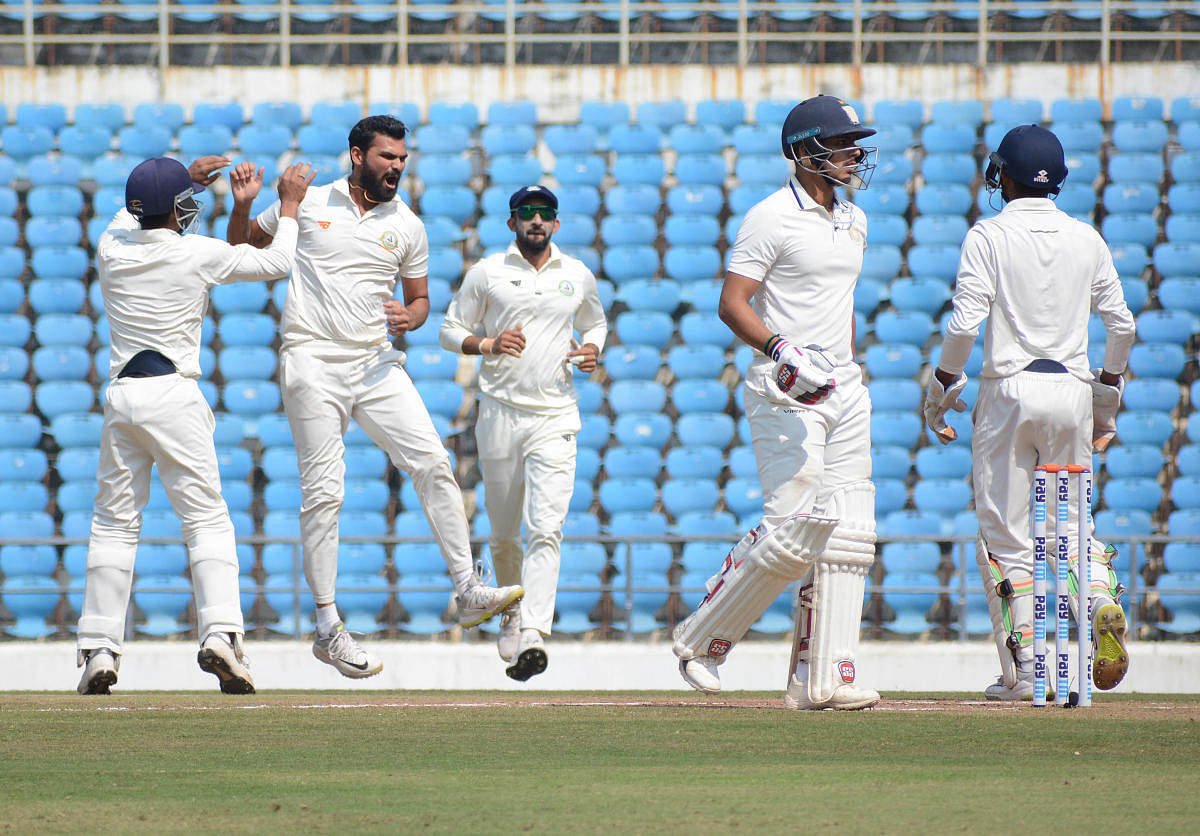
Aditya Sarwate may not have heard about American venture investor Chris Sacca and even less likely his insightful quote “ideas are cheap; execution is everything.”
Vidarbha knew the biggest obstacle on their way to second successive Ranji Trophy final was Cheteshwar Pujara and taking him out early would hugely boost their chances. So, the backroom staff had burnt midnight oil to devise a plan for his downfall. That’s, however, easier said than done.
The right-hander had worn down a quality attack like Australia in their own den not too long ago and had dashed Karnataka’s final hopes with a determined century in their own backyard. What chances did Saurashtra stand then? Very remote, one would probably assume.
Vidarbha nevertheless had to work on a strategy and after watching his batting footage, including in Australia where he scored over 500 runs in four Tests, had come to the conclusion that their best chance of getting him out was at the start of his innings. That’s obvious but how do you do it? As any batsman worth his salt, Pujara appears a bit edgy at the start. He tentative especially against spin, and so he counters spin by stepping out and smothering the ball on pitches that aid some turn.
Hence, Vidarbha’s first plan was not to allow him to step out of the crease by setting an attacking field and making him play rather than kick away left-arm spinners’ deliveries from the rough. The key now was to land the ball in the right place and Sarwate did an excellent job of it.
“We have watched him a lot, and we saw him on the Australia tour also,” Sarwate said while talking about how Vidarbha planned Pujara’s dismissal. “We felt that initially, he is a bit tentative, and he jabs at the ball. That is why we kept a short leg. If the odd ball turns, then there is a silly point. Maybe he played half-cock which is why he got out. We planned the field setting after watching him on TV. If you keep fielders in his weak areas at the start, then his shots get curtailed,” he pointed out.
With a short-leg, a silly point and a slip in place, the left-arm spinner sent down 10 of the 11 balls that Pujara faced and allowed him to come down the pitch only twice, keeping the batsman either in the crease or push him back even more with flattish deliveries. Pujara, pointed out Sarwate, also has a habit of jabbing at away-going ball and, as predicted, the 10th ball spun away after pitching on middle. Pujara, who had been pinned the crease, poked at it away from his body only to find a healthy edge to Wasim Jaffer at slip.
It was only minutes before tea and Vidarbha chose the right occasion to attack Pujara who wouldn’t try anything adventurous to break the shackle. The plan may have worked or may not, but the execution was so professional that even a batsman like Pujara had no answer to it on the day.
“Yes, Pujara is the biggest wicket I’ve got (in my career),” said a delighted Sarwate. “He had just come to the crease, with tea also not far away. So, our plan was to attack. We didn’t want to let him step out, which he does a lot. We thought the more we make him play from the crease, the better it will be for us.”